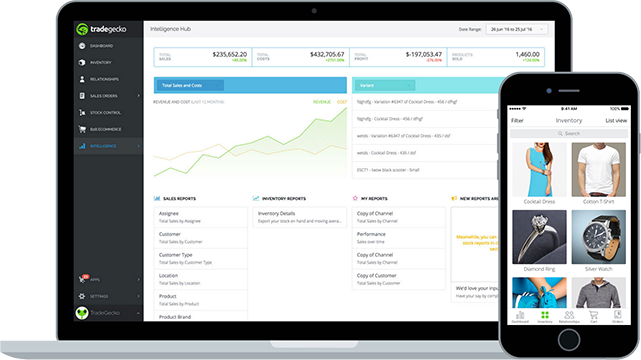Charles Intrieri is an experienced supply chain professional and is a recognized thought leader and innovator, primarily in the areas of supply chain optimization. In this guest post, he shares his supply chain expertise on how to run a warehouse audit and survey:

Warehouse management: How to run a warehouse audit and survey
First, look at the inventory: Is it pallets? boxes? SKUs? No, it is money. It is money in a bank. The bank must be secure. No one should roam the warehouse and take parts for samples/sales unless they notify the warehouse staff. It is money they are taking! One of the root causes for variations in cycle counting on hand in the warehouse versus on hand in the computer is theft!
Typically, a company’s inventory that accounts for more than half of its working capital would get plenty of attention. However, in reality, only a few companies seem to really pay attention to their stockroom or warehouse, or the five processes that affect it (receiving, put-away, picking, shipping and maintenance, where “maintenance” represents the combination of cycle counting, consolidation, and other processes that maintain the stockroom in good operating order).

You can’t create a truly lean warehousing process if you don’t have effective processes to supply materials to the floor. If it takes a week or more for inbound shipments to move from the receiving dock to warehouse shelves (which it many times does…) and then out to the shipping door, you’re robbing other departments (R&D, Marketing, even IT) of capital that could make them more effective.
That lack of attention represents an opportunity for individuals, to make a difference at their companies and customers.
A stockroom that only holds materials for New Product Introduction will look very different from a manufacturing warehouse for a television or large appliance factory. But more frequently I’ve found that the problems I’ve observed were due to not making necessary investments. For example, focused investments in materials handling operations can have considerable ROI. Improving receiving and warehouse performance can enable you to take multiple days out of inventory.
How to solve warehouse problems: Use DMAIC: Define, Measure, Improve, and Control. Also use PDCA: Plan, Do, Check and Act. Use a cross-functional team to solve problems.
What Warehouse Management System (WMS) do you use? Is it effective? Without data accuracy, it is ‘garbage in; garbage out.”
Make cycle counting and root cause analysis a central focus in your warehouse: put up a large chart and post accuracy percentages for everyone to see because inventory records accuracy affects ALL departments in the company.
Do you have and use task interleaving in your WMS? You can save money here!
Is your inventory turning 6-8 + times/year? If not, you can save money.
If you are have automation, do you have a Warehouse Control System (WCS) integrated in to the WMS? Or do you have a Warehouse Execution System (WES=WMS + WCS)?
What defines a well-run warehouse?
Whether it’s big or small, whether it handles small parts, large items, or a mix, a well-run warehouse will have the following characteristics:
The warehouse should have a lean culture and practice:5S, Kaizen (and Kaizen Blitz for Continuous Improvement), Kanban pull systems, and Lean Six Sigma. You must continuously improve warehouse operations daily.

SKUs should be stored:
- According to a strategy that accounts for the physical size of each item and the frequency with which it is picked
- SKUs will be managed to make efficient use of available space
- SKUs will be stored in a way that will keep them safe and in good condition – and will not pose a danger to warehouse workers
- Items will be managed to make safe and efficient use of manpower
- SKUs Slotted: Items will be managed in a way to provide high performance to the warehouse’s “customer” or shipping door
- SKUs will be managed in a way to minimize handling: Use of task interleaving
- Problems and issues will be physically separated and handled expeditiously.
- Performance and diagnostic metrics will be collected & published.
- Obsolete, Excess and Slow Moving SKUs to be reviewed monthly by a cross-functional team: Suggest disposition or changes to management
- Ask current employees for their input to obtain buy-in
There are trade-offs between these, especially when resources are limited. If space is limited, a well-run warehouse may decide to pack some of its slow-moving parts into a small space. This make picking those parts less efficient, but it will also increase the amount of space (and decrease handling time) for the frequently picked / fast-moving parts. If automation (forklifts, conveyors, etc.) is limited, the stockroom may use more floor storage.
Other warehousing best practices
What you should see when walking through a stockroom and associated areas like receiving, staging, etc.:
• Picking processes and storage strategies that are designed to minimize the amount of time and effort spent on the most frequently picked items while maintaining control of inventory. Examples of this include:
- Putting the most frequently picked items along the main aisle, at ground level, or near the exit from the warehouse (to the manufacturing area). You might see, for instance, a set of shelves with commonly picked items along the wall by the doorway; or flow racks; or even pallets of materials staged for quick delivery.
- A mix of storage methods: pallet racks for items that are received on pallets and are picked in large quantities, flow racks, shelves for small parts storage, etc.
- Use of automated identification tools – bar code or RFID. Without auto-ID, workers have to manually keypunch transactions – which will lead to errors.
- Guided picking processes, where stockroom workers using RF Barcode equipment are guided through the stockroom in an efficient manner, so that they pick one item, then move to the next shelf for another item, and so forth – instead of moving from one area to another, then back to the original area.
• Cleanliness and good order: Take turns cleaning the warehouse: it is your home away from home. Use Lean’s 5S: Sort, Set in order, Shine, Standardize and Sustain (Sustaining 5S is the most difficult.) You should be able to easily see box labels, and items should be stacked neatly. There should be a clear distinction between each storage location. Usually that means a physical barrier (like a metal divider) or air. Make it obvious which items are in each location. Set up signs for: Aisles, bays, Shelves and Slots.
• Bay location IDs are on the shelves & racks, to identify each individual storage location.
• Generally, one item stored per location. There can be temporary exceptions to this rule when a stockroom or warehouse is near or over capacity, but multiple part numbers in the same location will lead to picking and inventory errors if allowed to become normal practice.
• Attention to Safety/OSHA (top priority) and ergonomics, including adequate and efficient lighting. Workers shouldn’t have to spend their days kneeling on the floor, nor should they be asked to frequently pick up heavy boxes. At minimum, you should see manual conveyors, tables, and carts for workers to use while receiving and picking goods. If forklifts operate in the aisles, there should be obvious attention to safety requirements. Fork Lifts should practice task interleaving so there are no “deadhead” loads in the warehouse. Every time you see a Fork Lift/Driver, they are carrying a load, and are not empty.
• There should be a small holding area for received goods that can’t be processed, quality issues, return to vendor (RTV), reverse logistics and items in “quarantine” and other problem items. The items in this area shouldn’t have aged more than a week or two.

About the author
Mr. Charles Intrieri is a highly experienced and credentialed Supply Chain professional and is a recognized thought leader and innovator, primarily in the areas of Supply Chain Optimization, Third Party Logistics (3PL) International Purchasing/Importing, Requests for Quotation (RFQ) generation, Inventory Management and Logistics, Warehousing, strategic sourcing, supplier management, contract negotiations, truckling: TL/LTL/TMS/pooling/consolidation and reviews, and Purchasing operations. He is a motivational team builder with a history of conducting significant organizational transformation and achieving important operational successes at the local, regional and global level.
Check out Mr. Intrieri's blog at The Lean Supply Chain to learn more about 3PLs, warehouse management, supply chain optimization and inventory management and logistics. This post was originally published on his blog.
See also:
How to get paid on time as a supplier
3PL: everything you need to know about third-party logistics










